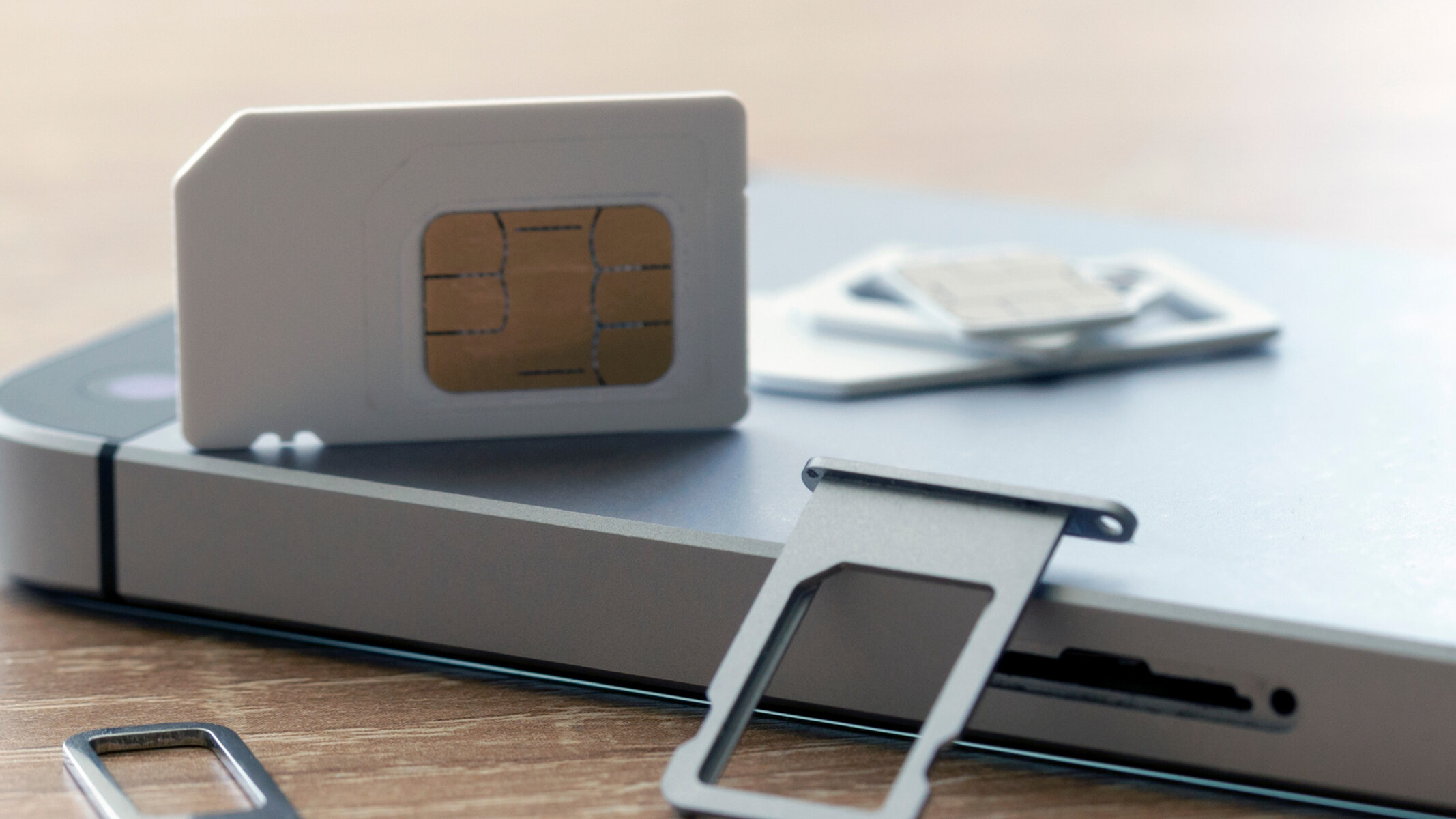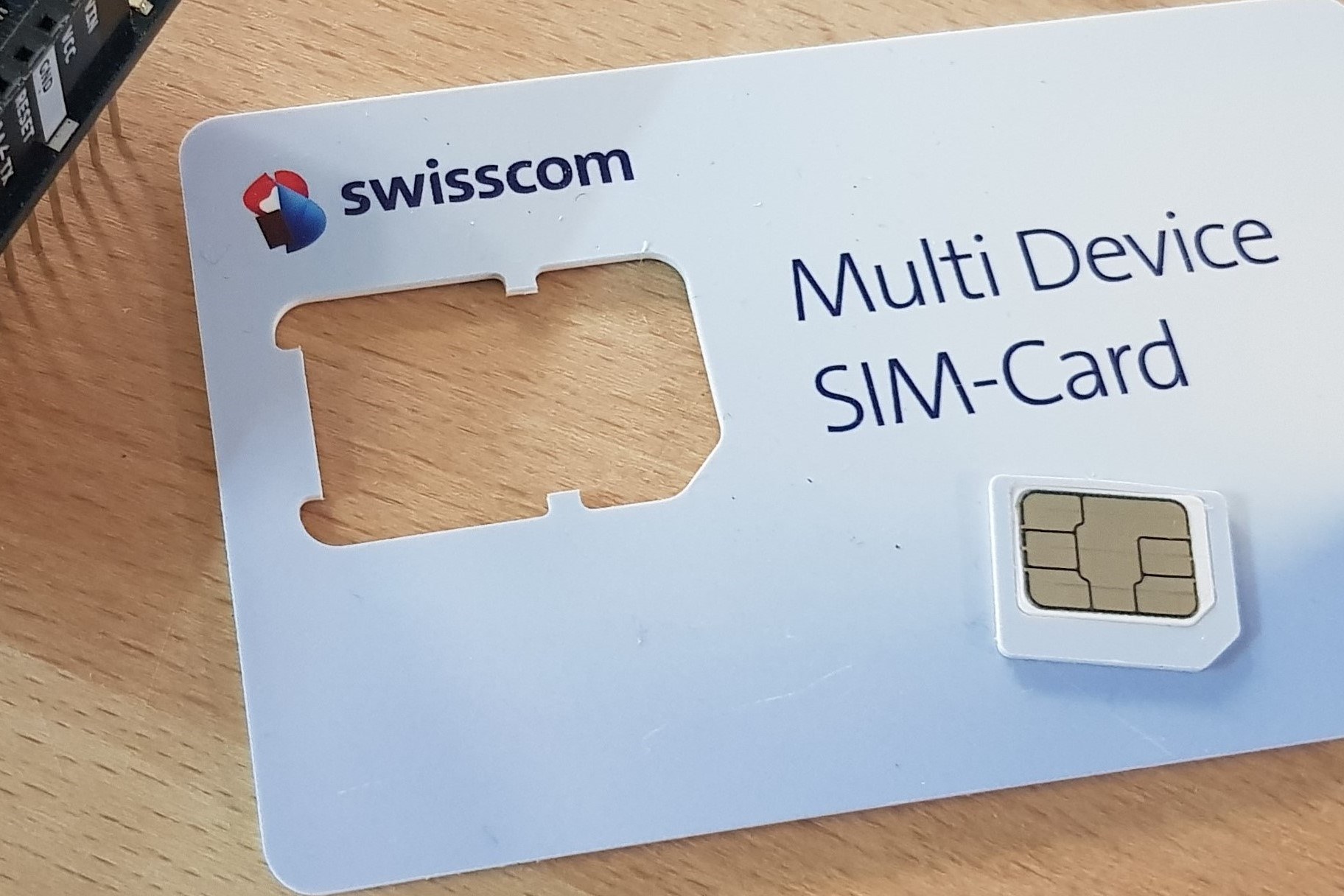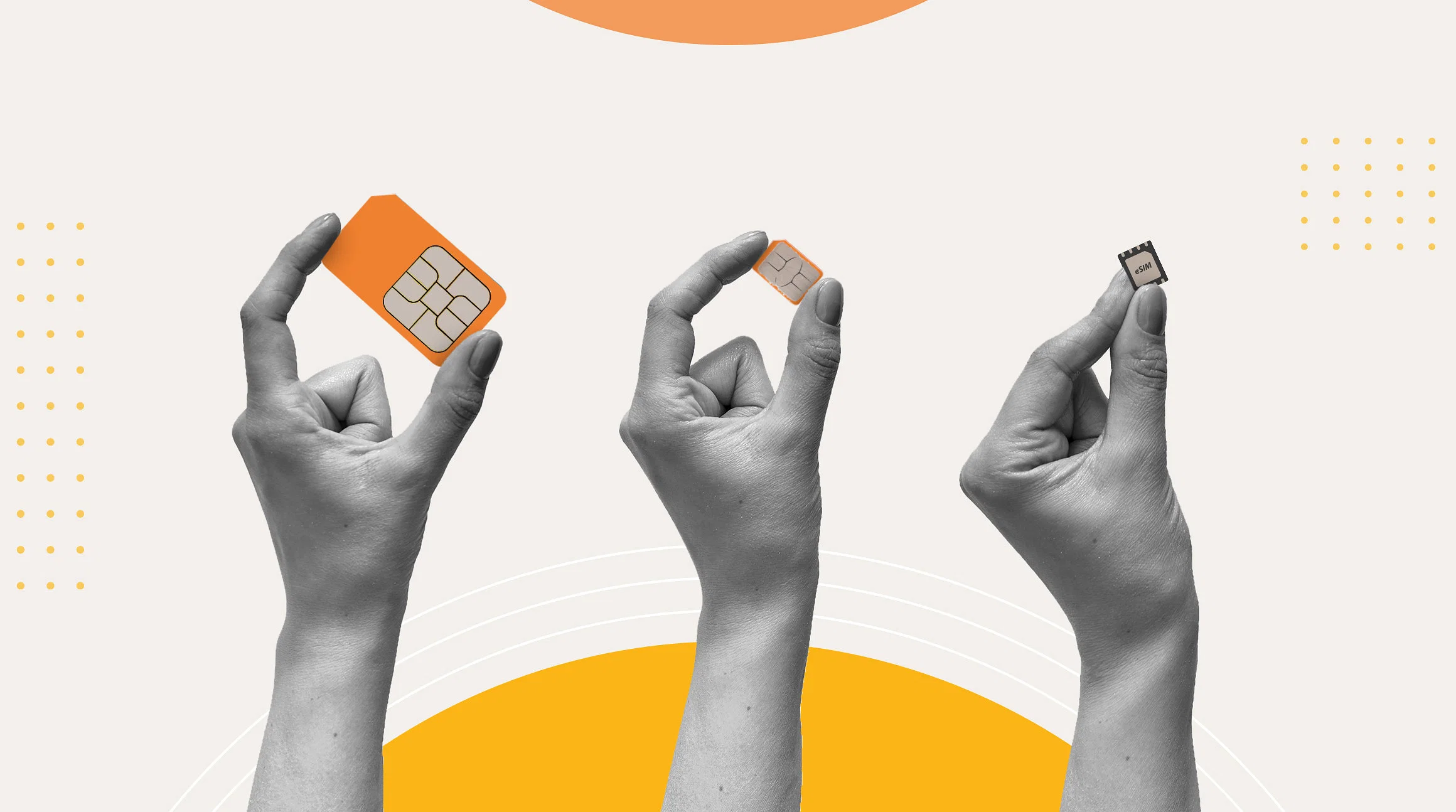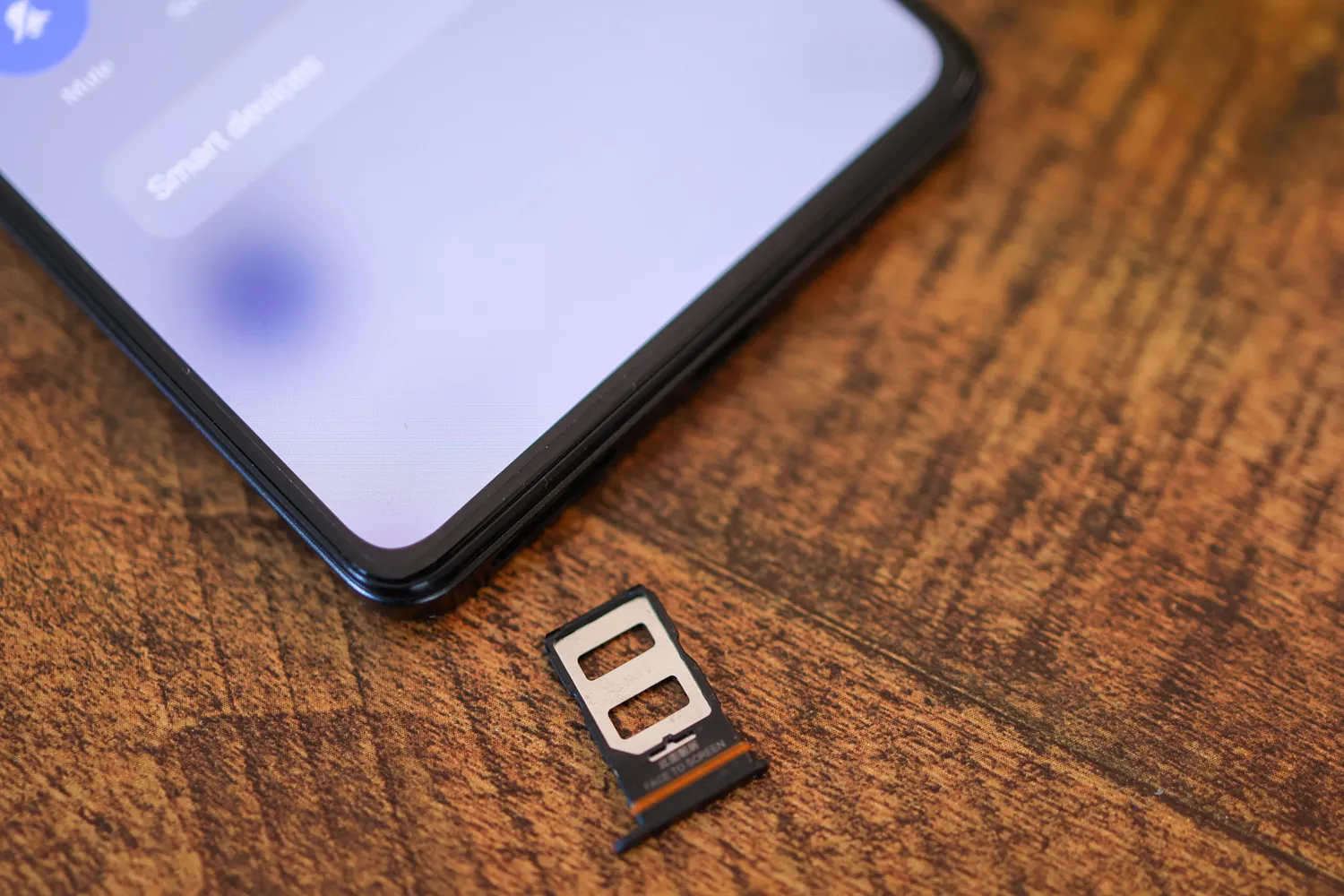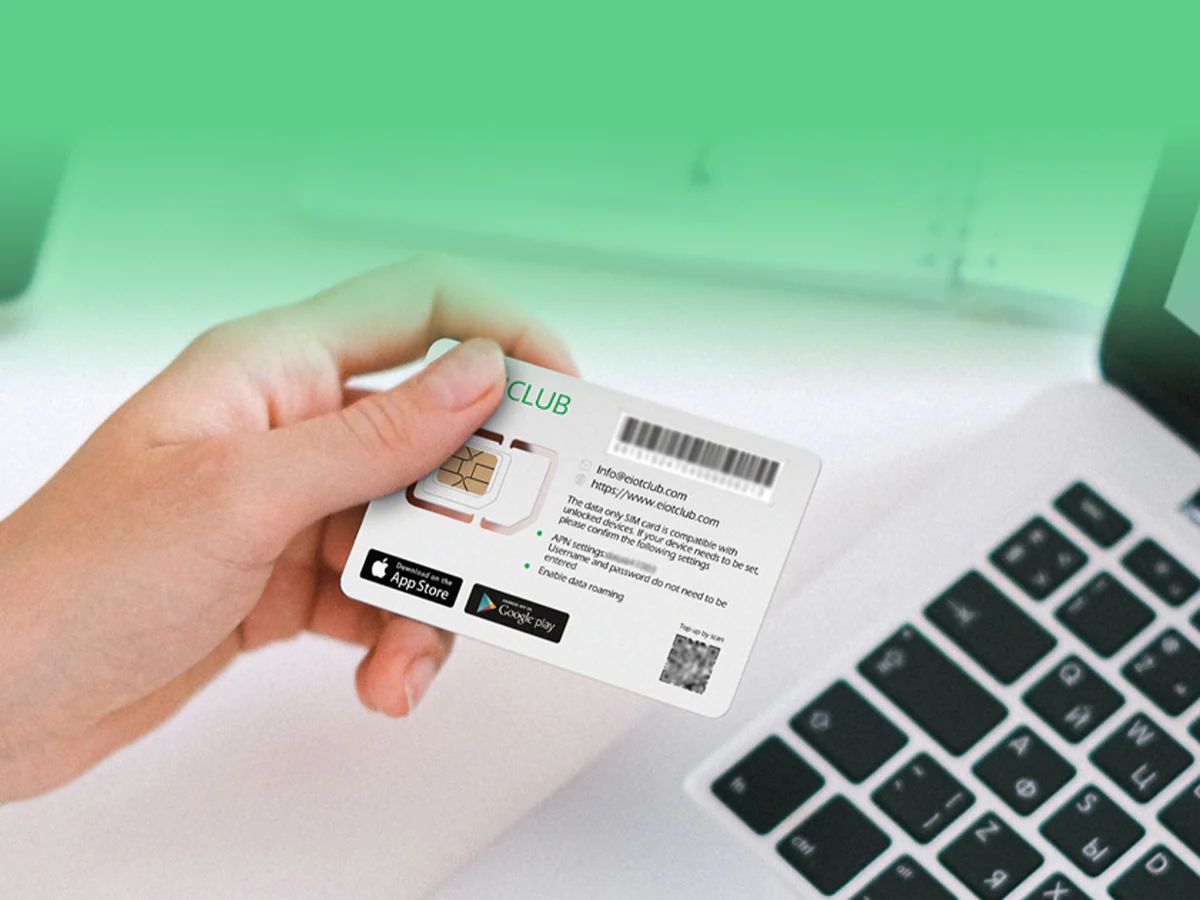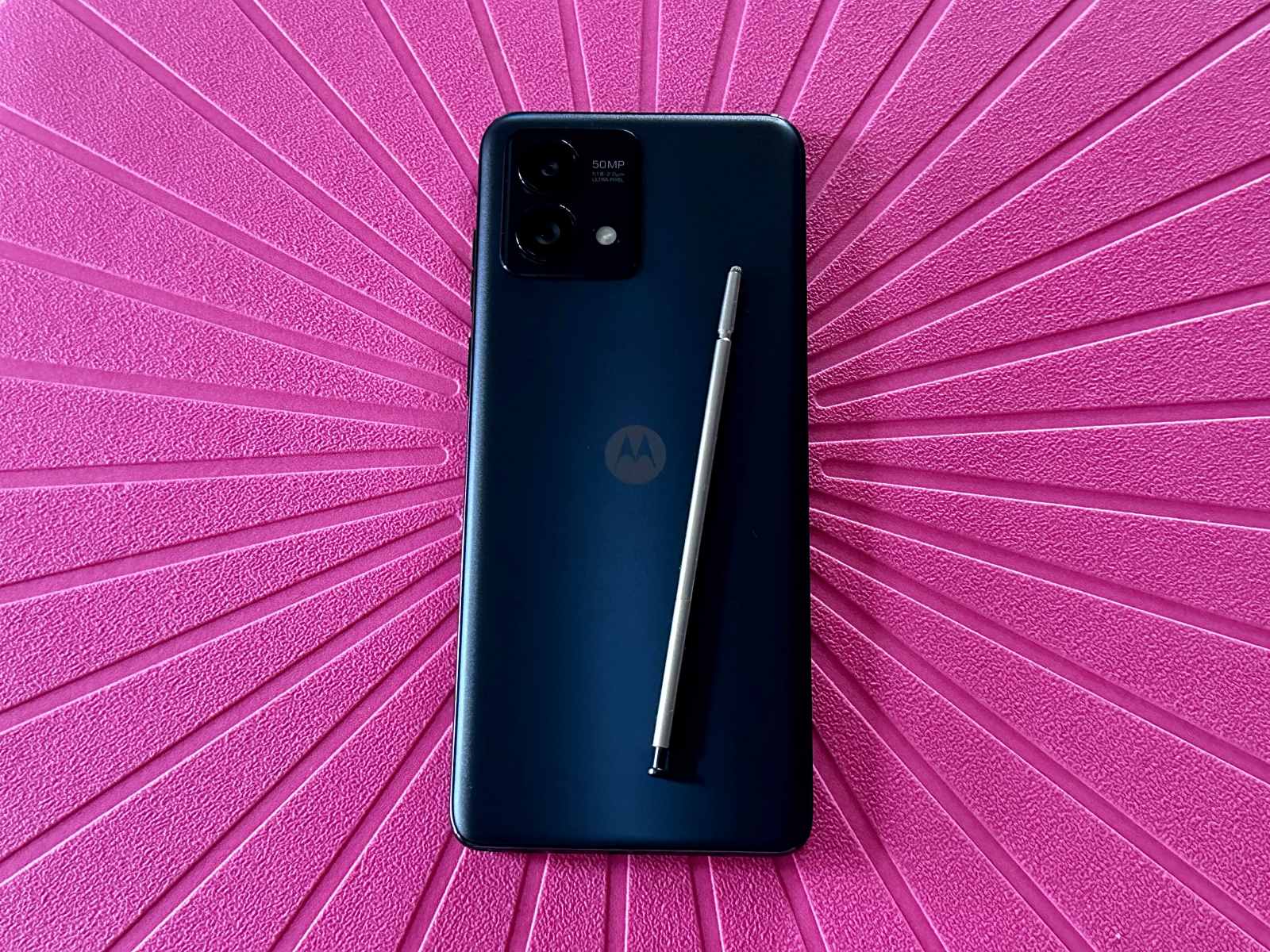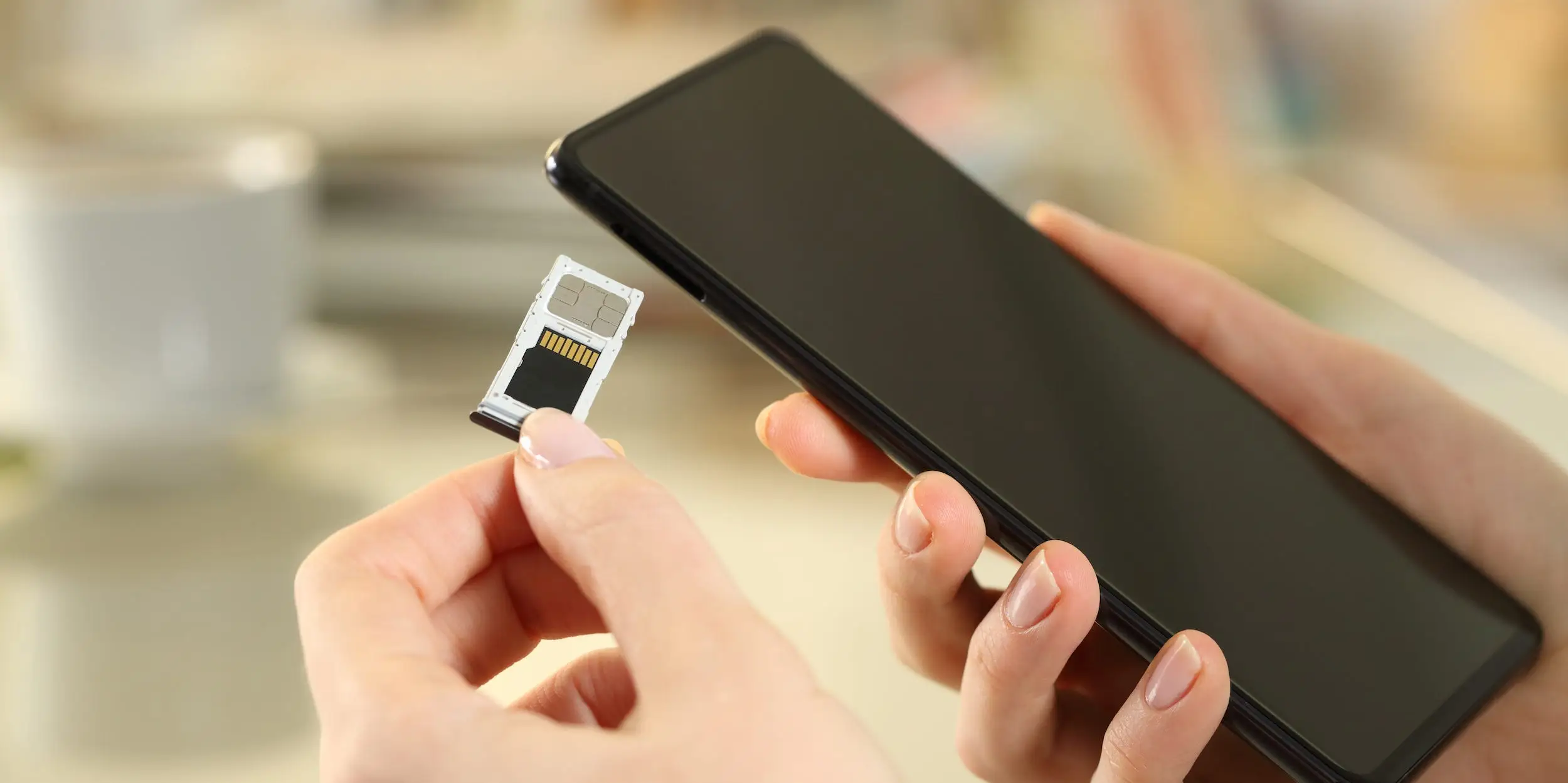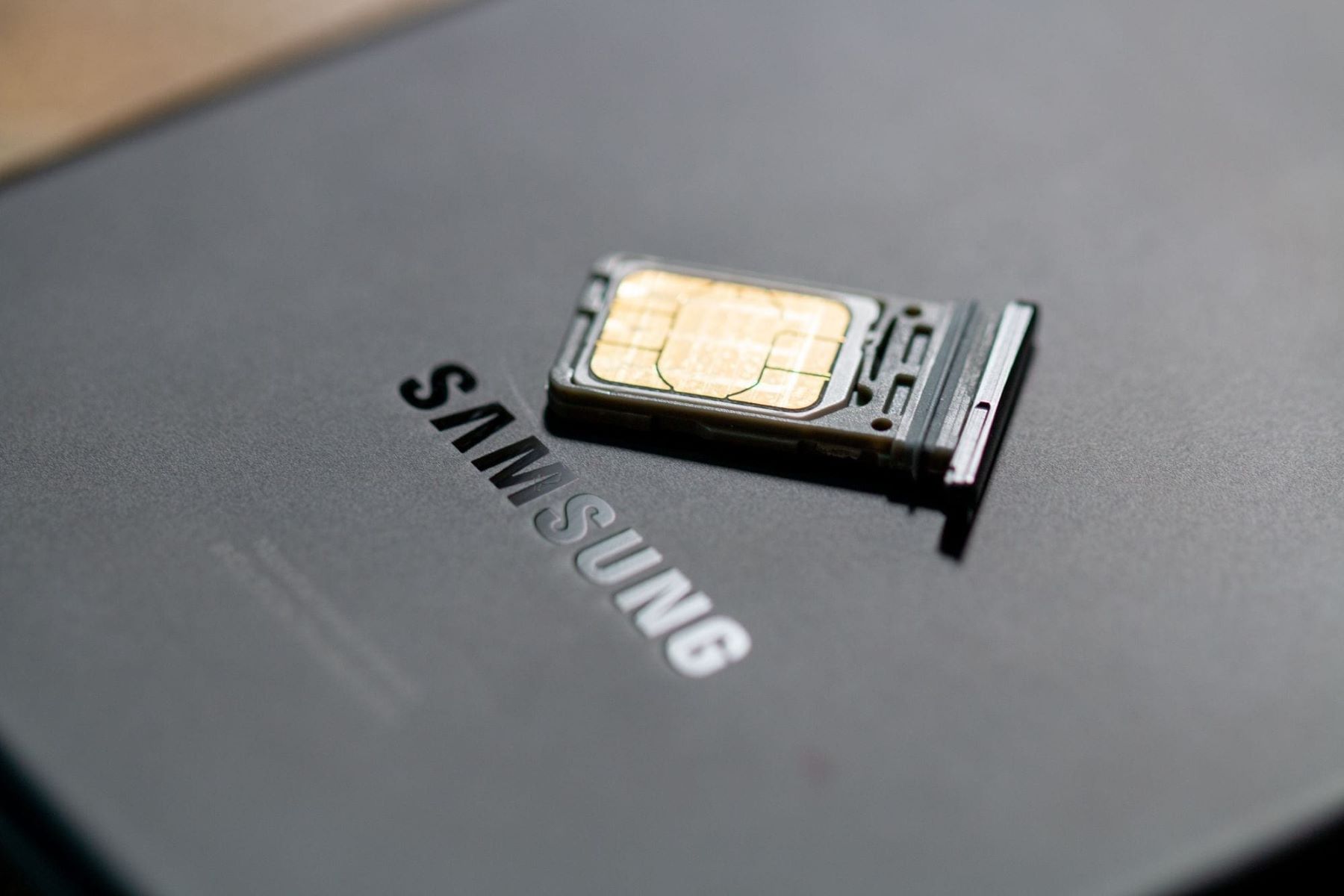Introduction
A SIM card, short for Subscriber Identity Module, is a small portable memory card that is used in smartphones and other mobile devices. It plays a vital role in connecting your device to a mobile network and allows you to make calls, send text messages, and access the internet. In simpler terms, a SIM card is like a key that unlocks your smartphone’s full functionality and enables it to communicate with the outside world.
Over the years, SIM cards have evolved and come in different types and sizes, catering to the ever-changing needs of mobile users. They have become an essential component of modern smartphones and have expanded beyond their traditional purpose of identifying and authenticating the subscriber on a network.
Understanding how a SIM card works and knowing the different types available can help you choose the right one for your device and make the most of its features. In this article, we will delve into the details of SIM cards, explore their functionality, discuss the various types available, and guide you on how to insert and troubleshoot them in your smartphone.
So if you’ve ever wondered what a SIM card is, why you need it for your smartphone, or how to deal with common SIM card issues, you’re in the right place. Let’s dive in and unravel the secrets of this tiny but mighty card that fuels our mobile communication.
What Is a SIM Card?
A SIM card, or Subscriber Identity Module card, is a small removable memory card that is inserted into a smartphone or mobile device. It serves as a unique identifier for the device and enables it to connect to a mobile network.
The primary function of a SIM card is to authenticate the user and the device on the network. It contains information such as the subscriber’s phone number, network authorization data, contact list, and text messages. This information is securely stored on the SIM card and can be accessed by the device when needed.
SIM cards come in different sizes, including standard SIM, micro SIM, and nano SIM, to accommodate various device models. The size determines how the SIM card fits into the device’s SIM tray. In recent years, the nano SIM has become the most commonly used size, thanks to its compatibility with many smartphones.
One of the major advantages of using a SIM card is its portability. It allows users to easily switch between devices by simply removing the SIM card from one device and inserting it into another. This feature is particularly useful for people who frequently upgrade their smartphones or have multiple devices but want to use the same phone number and network services.
Moreover, SIM cards also provide security features that protect the user’s data and ensure the privacy of their communication. The SIM card encrypts voice, text messages, and data transmissions to prevent unauthorized access and eavesdropping. In addition, SIM cards can be locked with a PIN code or a biometric authentication method such as fingerprint or facial recognition to provide an extra layer of security.
Overall, a SIM card is a fundamental component of any smartphone or mobile device. It enables users to connect to a mobile network, access various network services, and securely store their personal information. Without a SIM card, a smartphone would essentially be a glorified multimedia device that lacks the crucial ability to make calls, send messages, or access the internet on the go.
Different Types of SIM Cards
As technology has advanced, SIM cards have evolved to meet the changing needs of mobile users. There are three main types of SIM cards: standard SIM, micro SIM, and nano SIM. Let’s take a closer look at each type:
- Standard SIM: The standard SIM, also known as a full-size SIM, was the original form factor introduced for mobile devices. It measures 85.6mm x 53.98mm and is mostly used in older feature phones and some older smartphones.
- Micro SIM: The micro SIM is a smaller version of the standard SIM card. It measures 15mm x 12mm and is commonly used in smartphones that were released between 2010 and 2013. Many mid-range and older iPhone models require a micro SIM card.
- Nano SIM: The nano SIM is the smallest SIM card available today. It measures 12.3mm x 8.8mm and is commonly used in current smartphones, including most iPhone models released since the iPhone 5. The nano SIM allows manufacturers to create slimmer devices with larger screens, as it takes up less space compared to its predecessors.
It’s important to use the correct SIM card size for your device to ensure compatibility. If you’re unsure which type of SIM card your smartphone requires, you can refer to the manufacturer’s specifications or consult your mobile service provider.
In addition to these standard sizes, there are also specialized SIM cards designed for specific purposes:
- Embedded SIM (eSIM): An eSIM is a programmable SIM card that is built directly into a device. It eliminates the need for a physical SIM card and allows users to switch between carriers and activate service plans digitally. eSIM technology is becoming more prevalent in newer smartphones and other connected devices like smartwatches and tablets.
- Data-only SIM: Data-only SIM cards, as the name suggests, are designed specifically for accessing mobile data services. They do not support voice calls or traditional text messaging and are commonly used in tablets, Wi-Fi routers, and other devices that primarily rely on internet connectivity.
Ultimately, the type of SIM card you need depends on your device’s compatibility and the services you require. Always ensure you have the correct size and type of SIM card to enjoy uninterrupted connectivity and functionality on your mobile device.
How Does a SIM Card Work?
A SIM card works by securely storing and managing the subscriber’s information, allowing the smartphone or mobile device to connect to a mobile network. Here’s a breakdown of how a SIM card functions:
- Identification and Authentication: When you insert a SIM card into your smartphone, the device reads the unique information stored on the card, such as the International Mobile Subscriber Identity (IMSI) and the Integrated Circuit Card Identifier (ICCID). This information is used to identify and authenticate the subscriber on the mobile network.
- Network Registration: Once identified, the SIM card communicates with the mobile network to register the device. This registration process allows the network to recognize your device and establish a connection.
- Mobile Network Services: After registration, the SIM card enables the device to access a range of mobile services such as voice calls, text messaging, and internet connectivity. These services are provided by the mobile network and are accessible as long as the SIM card remains active and the device is within network coverage.
- Secure Storage: A SIM card acts as a secure storage medium for various types of data, including contact information, text messages, and network settings. This data is securely stored on the card and can be accessed by the device when needed.
- Roaming: If you travel to a different country and want to use your smartphone, a SIM card allows for global roaming. By inserting a local SIM card, you can connect to the network of the foreign country and access their services. This provides convenience and cost savings compared to using an international roaming plan.
- Security Features: SIM cards also offer security features to protect the user’s data and prevent unauthorized access. This includes encrypting voice calls and text messages, as well as implementing PIN code or biometric authentication methods to lock and unlock the SIM card.
Overall, a SIM card serves as an essential link between your smartphone and the mobile network, enabling communication and access to various network services. It allows your device to be identified, authenticated, and connected to the network, providing you with seamless connectivity wherever you go.
Why Do You Need a SIM Card for Your Smartphone?
A SIM card is a crucial component for your smartphone because it enables you to connect to a mobile network and access a range of essential services. Here are some key reasons why you need a SIM card for your smartphone:
- Connectivity: A SIM card allows your smartphone to connect to a mobile network, providing you with seamless voice calling, text messaging, and internet access. Without a SIM card, your device would be limited to Wi-Fi connectivity only, severely restricting its functionality and convenience.
- Phone Number: The SIM card is associated with a unique phone number, allowing others to reach you by calling or sending text messages. It serves as your mobile identity, enabling communication with friends, family, colleagues, and business contacts.
- Mobile Data: By using a SIM card, you can access mobile data services, allowing you to browse the internet, stream videos, use social media, and access various online services on the go. Mobile data provides the flexibility to stay connected wherever you are, without relying on Wi-Fi networks.
- International Roaming: If you travel internationally, having a SIM card allows you to use your smartphone abroad. You can avoid exorbitant roaming charges by inserting a local SIM card in your destination country and enjoy local rates for calls, texts, and data services.
- Personalization: With a SIM card, you have the flexibility to personalize your mobile experience. You can choose the mobile service provider and plan that best suits your needs, whether it’s unlimited data, affordable calling rates, or additional features such as international calling or data rollover.
- Security and Privacy: SIM cards offer security features such as encryption for voice calls and text messages, providing a level of privacy and protection for your communication. Additionally, you can secure your SIM card with a PIN code or biometric authentication, ensuring that only authorized individuals can access your device’s services.
In summary, a SIM card is essential for your smartphone as it provides connectivity, enables communication with a unique phone number, grants access to mobile data services, allows for international roaming, offers personalization options, and enhances security and privacy. Without a SIM card, your smartphone would lose its primary functionality as a mobile communication device.
How to Insert a SIM Card in Your Smartphone
Inserting a SIM card into your smartphone is a simple process, though the exact steps may vary depending on the make and model of your device. Here is a general guide on how to insert a SIM card:
- Power Off your Smartphone: Before inserting or removing a SIM card, it is advisable to power off your device to avoid any potential damage.
- Locate the SIM Card Slot: Most smartphones have a SIM card slot either on the side of the device or beneath the battery cover. Consult your smartphone’s user manual or manufacturer’s website to find the exact location of the slot.
- Eject the SIM Card Tray: Use the SIM eject tool or a paperclip to gently press into the small hole next to the SIM card slot. This will eject the SIM card tray.
- Place the SIM Card: Carefully place the SIM card on the SIM card tray, ensuring the gold contacts are facing downward. If your smartphone uses a nano SIM, you may need to insert it into a compatible adapter before placing it on the tray.
- Insert the SIM Card Tray: Slide the SIM card tray back into the smartphone until it clicks into place. Make sure it is properly aligned and fully inserted. Do not force it, as this could damage the SIM card or the device.
- Power On your Smartphone: Once the SIM card is inserted correctly, you can power on your smartphone. It may take a few moments for the device to recognize the SIM card and establish a connection to the mobile network.
- Configure SIM Card Settings: After inserting the SIM card, you may need to configure some settings related to the SIM card and your mobile network. This could include setting up data roaming options, selecting preferred networks, or entering any necessary network-specific settings.
Remember, if you encounter any difficulties or are unsure about the process, consult your smartphone’s user manual or contact the manufacturer’s customer support for guidance specific to your device.
Overall, inserting a SIM card in your smartphone enables you to connect to a mobile network and utilize the full range of communication and online services offered by your mobile service provider.
Troubleshooting SIM Card Issues
While SIM cards are generally reliable, there may be instances where you encounter issues with your SIM card and its functionality. Here are some common SIM card issues and troubleshooting steps:
- No SIM Card Detected: If your smartphone displays a “No SIM Card” error or does not recognize the SIM card, try the following steps:
- Ensure the SIM card is properly inserted and securely seated in the SIM card slot.
- Power off your device, remove the SIM card, clean the gold contacts with a soft cloth, and reinsert it.
- If available, try inserting the SIM card into a different smartphone to determine if the issue lies with the SIM card or the device.
- Contact your mobile service provider to ensure the SIM card is activated and there are no network-related issues.
- Poor Signal or Call Quality: If you are experiencing weak signal or poor call quality, consider the following troubleshooting steps:
- Check if your device is in an area with poor network coverage. Test the signal strength in different locations to identify any network-related issues.
- Verify that the SIM card is properly inserted and has no physical damage or dirt on the contacts.
- Reset your network settings on the device to resolve any software-related issues that may be affecting signal strength or call quality.
- If the problem persists, contact your mobile service provider for assistance. They may be able to troubleshoot the issue or provide guidance on potential network disruptions or maintenance in your area.
- Activation Issues: If you are unable to activate your SIM card or encounter errors during the activation process, follow these steps:
- Double-check that the SIM card is compatible with your device and the mobile service provider you are attempting to activate with.
- Ensure you have provided accurate and up-to-date information during the activation process, such as personal details and activation codes.
- Contact your mobile service provider’s customer support for assistance. They can verify the activation status, troubleshoot any potential issues, and guide you through the activation process.
- Lost or Stolen SIM Card: If your SIM card is lost or stolen, take immediate action to protect your account and personal information:
- Contact your mobile service provider to report the lost or stolen SIM card. They can deactivate the card and prevent unauthorized usage.
- Request a replacement SIM card from your mobile service provider. They will typically reissue a new SIM card with the same phone number.
- Be cautious of any unauthorized activity on your account and monitor your bill for any suspicious charges.
If the troubleshooting steps mentioned above do not resolve your SIM card issues, it is recommended to contact your mobile service provider’s customer support for further assistance. They have the expertise and tools to diagnose and resolve more complex SIM card-related problems.
Remember, the SIM card is a critical component of your smartphone’s functionality, so it’s important to address any issues promptly to ensure uninterrupted communication and access to mobile services.
The Future of SIM Cards
The future of SIM cards is undergoing exciting advancements as technology continues to evolve. Here are some potential developments and trends that may shape the future of SIM cards:
- eSIM Technology: Embedded SIM (eSIM) technology is becoming increasingly popular. With eSIMs, SIM cards are built directly into the device, eliminating the need for physical cards. This technology provides more flexibility by allowing users to switch carriers and activate service plans digitally, without needing to physically change SIM cards.
- Remote SIM Provisioning: Remote SIM provisioning (RSP) allows for over-the-air provisioning and management of SIM cards, enabling users to activate and switch between networks without physically changing SIM cards. RSP simplifies the process and provides a seamless user experience, especially for devices with embedded SIMs.
- Internet of Things (IoT) Connectivity: The rise of the Internet of Things (IoT) is driving the demand for SIM cards in various connected devices beyond smartphones. SIM cards are used in smartwatches, smart home devices, and even vehicles, providing connectivity to these devices and enabling them to communicate with each other and the internet.
- Expanded Functionality: SIM cards may evolve to offer additional functionality beyond traditional connectivity. For example, secure storage capabilities may be enhanced to store more data, including digital IDs, authentication certificates, and payment credentials. This could contribute to the growth of mobile payments, digital identity verification, and other secure applications.
- Improved Security: As technology advances, SIM cards are likely to incorporate more advanced security features. These may include enhanced encryption protocols, improved tamper-resistant designs, and stronger authentication methods. This would further protect user data, prevent fraud, and ensure the privacy of communication and transactions.
- Integration with Blockchain: The adoption of blockchain technology could have implications for SIM cards. Blockchain-based SIM cards could potentially provide enhanced security, increased control over personal data, and decentralized authentication, allowing for more secure and private communication.
While the above developments represent the potential future of SIM cards, it is important to note that adoption and implementation will depend on various factors, including industry standards, device compatibility, regulatory frameworks, and consumer demand.
As technology progresses, it will be interesting to witness how SIM cards continue to evolve and adapt to meet the changing needs of mobile users. One thing is certain: SIM cards will remain a critical component in providing connectivity and enabling communication in an increasingly interconnected world.
Conclusion
The SIM card is a vital component that plays a crucial role in connecting our smartphones and mobile devices to mobile networks. It acts as an identifier and authenticator, allowing us to make calls, send text messages, and access the internet on the go. The evolution of SIM cards has seen the development of different sizes, from standard SIM to micro SIM and nano SIM, to cater to various device models.
As we explored in this article, SIM cards offer several advantages, such as portability, personalization, and enhanced security. They allow us to switch devices easily while keeping the same phone number and network services. SIM cards also protect our data through encryption and the ability to lock the card with a PIN code or biometric authentication.
Inserting a SIM card into our smartphones is a simple process that allows us to benefit from mobile connectivity and access a range of services. However, issues can arise, such as card detection problems, signal or call quality issues, and activation complications. By following troubleshooting steps and seeking assistance from our mobile service providers, many of these issues can be resolved.
The future of SIM cards holds even more exciting possibilities. The rise of eSIM technology, remote SIM provisioning, and the expanding use of SIM cards in IoT devices signify a shift towards greater flexibility and connectivity. Further advancements in security, integration with blockchain technology, and expanded functionality may reshape how SIM cards operate in the future.
In conclusion, SIM cards are essential for our smartphones, allowing us to stay connected and access a wide range of mobile services. They provide us with the ability to communicate, browse the internet, and personalize our mobile experience. As technology continues to progress, SIM cards will likely continue to evolve, adapting to meet the changing needs and demands of mobile users in an increasingly connected world.







